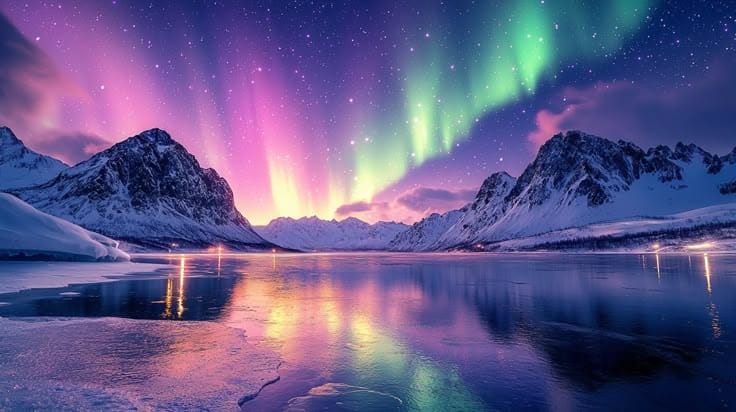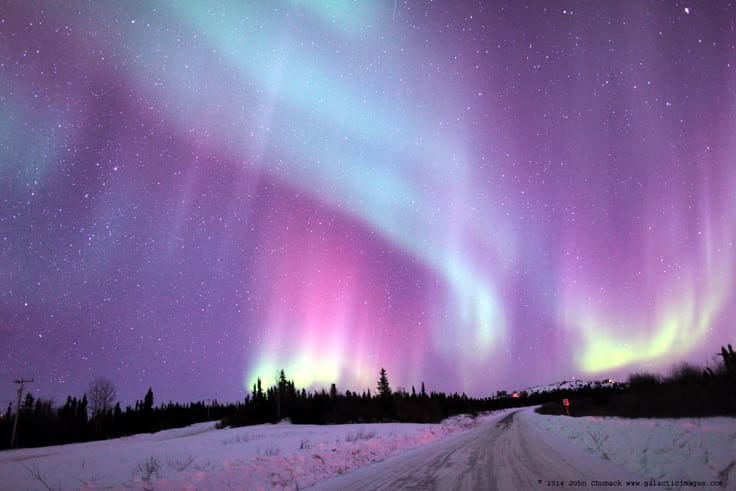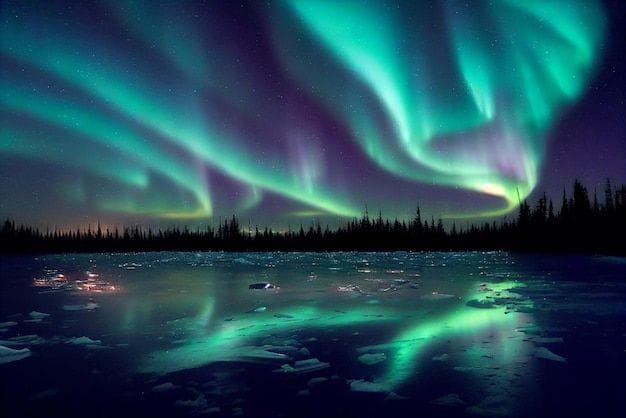Aurora Borealis: A Journey Between Science and Beauty
The aurora borealis is nature's dance in the night sky, where colors harmonize to tell the story of the universe.

Aurora borealis is one of nature’s greatest wonders, captivating minds and sparking scientific inquiry alike. These beautiful lights appear in polar regions where vibrant hues dance across the night sky in an unforgettable display caused by charged particles from the Sun colliding with Earth’s magnetic field to form colorful arrays in the sky that shimmer like divine masterpieces in our solar system. Though visually breathtaking, its origins involve complex physics and astronomy concepts: How exactly these lights form exactly and why do they occur in specific location. let’s investigate this cosmic marvel that looks like divine masterpiece painted across our planet’s skies together!
what is aurora borealis

The Aurora Borealis (AB), is a natural phenomenon found throughout polar regions and noted for its vibrant displays of green, red, blue and purple lights in its sky. This stunning phenomenon provides both ancient mythological references as well as scientific facts that amaze and fascinate viewers of any age.
how does aurora borealis form
Aurora borealis occurs due to interaction between charged particles from the Sun and Earth’s atmosphere. Including space physics and magnetism, of course! Here’s a simplified explanation:
- Solar Winds and Charged Particles:
To begin this story, solar winds emanated by our sun are formed as streams of charged particles such as electrons and protons traveling rapidly through space towards Earth in several days’ time. - Earth’s magnetic field:
As particles approach Earth, they encounter its magnetic field which acts like a shield to guide particles toward both poles of our planet’s magnetic system, typically starting in what’s known as “polar magnetosphere.” Here most interactions begin taking place. - Interaction With Atmospheric Gases:
Once charged particles enter Earth’s upper atmosphere, they come in contact with gas atoms like oxygen and nitrogen to excite their molecules and become excited.
At altitudes between 100 and 300 kilometers, particles interacting with oxygen produce green lights, the predominant hue of an aurora display. If this interaction takes place at higher altitudes, red hues emerge instead.
When particles hit nitrogen, blue or purple lights appear less frequently. - Energy Emitted as Light:
After these interactions, atoms settle back down into their normal states, discharging any stored energy as visible light that we observe in the sky, creating the stunning aurora borealis that so captivates us!
when does aurora borealis appear
Aurora borealis usually appears between September and March in the Northern Hemisphere, and March and September in the Southern. To make visible, certain conditions must exist such as minimal light pollution on clear nights with low temperature. Further, solar activity influences its visibility as increased activity leads to stronger solar winds that enhance this phenomenon.
where can you see the aurora borealis
Auroral displays are most commonly observed near the poles where Earth’s magnetic field is concentrated, including prominent sites like:
Norway, Sweden, Finland, Iceland and Alaska form the Northern Pole. Whilst parts of Australia and New Zealand make up its Southern Pole.
Chances of seeing an aurora increase significantly when skies are dark, clear and free from light pollution. such as rural or polar regions with extended nights.
aurora borealis northern lights

Aurora lights provide breathtaking displays. Their colors depend on what kind of gasses their particles interact with; green is most visible at altitudes between 100-300 kilometers when particles interact with oxygen; red occurs at higher altitudes while blue and purple arise due to interactions with nitrogen gas in the atmosphere. Adding depth and beauty to this stunning show of nature in the night sky.
Green Aurora
The green aurora is one of the most captivating colors found within an aurora display, typically appearing when charged particles from the sun interact with oxygen atoms at altitudes between 100 and 300 kilometers, creating interactions which excite oxygen molecules, which release their stored energy as bright green light.
Green aurora displays are more often visible at lower altitudes compared to red or blue aurora displays and have various forms, including arches and shimmering light curtains, that captivate observers.
Red aurora
Red aurora is one of the rarest colors seen during an auroral display, often occurring when charged particles interact with oxygen atoms at altitudes above 200 kilometers in an atmosphere with lower energy requirements for excitation, producing brilliant red lights when the excited state returns back into equilibrium. Creating this stunning natural phenomenon!
Red aurora borealis displays are less frequently seen due to requiring special conditions at higher altitudes, typically appearing during intense solar activity and often depicted with light streaks across the sky. Their beauty can make for an impressive sight indeed!
Blue Aurora
A blue aurora is one of the more unique hues. This phenomenon results from charged particles colliding with nitrogen atoms in the atmosphere, producing blue to purple hues which illuminate the sky with their glow.
Blue aurora usually appears at higher altitudes compared to its colored counterparts, making it harder for observers to spot. But this stunning celestial beauty can often be witnessed around polar regions where perfect conditions exist for viewing this celestial phenomenon.
The aurora borealis is one of nature’s great marvels, uniting science with beauty. From scientific explanation to simply enjoying its mesmerizing display. Its mesmerizing display reminds us to appreciate how vast the universe really is. Witnessing such spectacle is truly unforgettable and worth every penny spent to be present for its spectacle!
References:
- NASA. “What Are the Northern Lights?” NASA
- National Oceanic and Atmospheric Administration (NOAA). “Aurora Basics.” NOAA,
- University of Alaska Fairbanks – Geophysical Institute. “Aurora Forecasts.”
Read also:
Are we alone in this universe? part One
